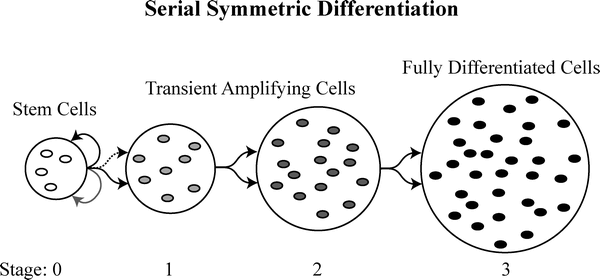Natural selection can occur at the cellular level, where it is detrimental to health. Fortunately it is normally controlled by a well-known pattern of ongoing cell differentiation in the mature tissues of animals, according to a new study published December 14 in PLoS Computational Biology.
The failure of normal cell differentiation patterns may explain cancer and senescent decline with aging, say researchers at the University of Arizona, the Santa Fe Institute, the University of Pennsylvania, and the Wistar Institute.
Darwinian natural selection and evolution is usually studied in populations of organisms, but it also applies to cellular populations; this is called “somatic” evolution. Such somatic evolution tends to reduce cooperation among cells, thus threatening the integrity of the organism.

In this study the authors proposed that a well-known pattern of ongoing cell differentiation in the mature tissues of animals functions to suppress somatic evolution, which is essential to the origin and sustainability of multicellular organisms.
The team, lead by Dr. John Pepper, tested this hypothesis using a computer simulation of cell population dynamics and evolution. The results were consistent with the hypothesis, suggesting that familiar patterns of ongoing cell differentiation were crucial to the evolution of multicellular animals, and remain crucial as a bodily defense against cancer.
CITATION: Pepper JW, Sprouffske K, Maley CC (2007) Animal cell differentiation patterns suppress somatic evolution. PLoS Comput Biol 3(12): e250. doi:10.1371/journal.pcbi.0030250





Comments